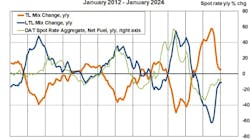The National Highway Traffic Safety Administration (NHTSA) has issued its final Enforcement Guidance Bulletin (2015-01) regarding the use of confidentiality provisions in private litigation.
NHTSA's ability to identify and define safety-related motor vehicle defects relies in large part on manufacturers' self-reporting. However, although federal regulations may require them to report
certain information to NHTSA, manufacturers do not always do so, or do not do so in a timely manner. Additionally, the information a manufacturer is required to report varies greatly depending on the product and company size and purpose. Given these constraints, safety- related information developed or discovered in private litigation is an important resource for NHTSA.
This Enforcement Guidance Bulletin sets forth NHTSA's recommended guiding principles and best practices to be utilized in the context of private litigation. To the extent protective orders, settlement agreements, or other confidentiality provisions prohibit information obtained in private litigation from being transmitted to NHTSA, such limitations are contrary to Rule 26 of the Federal Rules of Civil Procedure, its state corollaries, and sound principles of public policy. Although such restrictions are generally prohibited by applicable rules and law, the Agency recommends that litigants include a specific provision in any protective order or settlement agreement that provides for disclosure of relevant motor vehicle safety information to NHTSA, regardless of any other restrictions on the disclosure or dissemination of such information.
On September 21, 2015, NHTSA published a proposed Enforcement Guidance Bulletin setting forth what the Agency had identified as best practices for private litigants utilizing protective orders and settlement agreements with confidentiality provisions. NHTSA solicited public comment before issuing a final Enforcement Guidance Bulletin and received 124 public submissions.
NHTSA’s summary of the comments: “While the majority of comments fully supported the Enforcement Guidance as drafted, some opined that the guidance was unnecessary as manufacturers are already required to report certain information to the Agency, and noted that NHTSA possesses the power to request additional information from manufacturers through its investigative authority.
“However, in order to fully exercise its regulatory authorities and powers, the Agency must be made aware of the need to do so in the first instance. Both Agency experience and that of several other commenters provide several examples of a manufacturer failing to accurately and timely report relevant safety-related information to NHTSA. The Agency cannot request such information from the manufacturer if it is not first made aware of potential underlying safety-related issues.”








